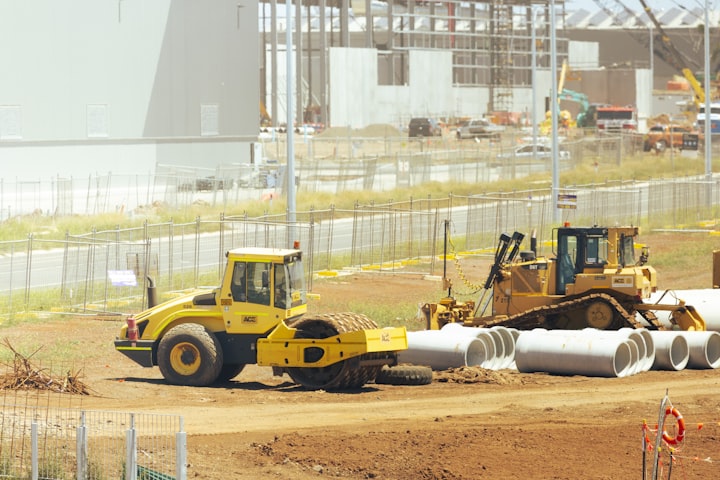Development Of Infrastructure
Development Of Infrastructure

In 1987, a panel of the US National Research Council adopted the term "Public Works Infrastructure" to refer to all modalities of transportation including roads, airports, telecommunications, and water supply combined with the systems which constitute them.
Infrastructure is a general term for the basic physical systems of an enterprise, region, or nation. Applicable to large and small organizational frameworks, the infrastructure includes a variety of systems, structures, and physical components that are required. For example, the electric grid of a city, state, or country is an infrastructure based on equipment to provide services in the areas it supports.
Infrastructure, for example, transport, electricity, water, and telecommunications systems support economic activity and catalyze growth and development...
One of the necessary conditions for sustainable economic and social development is the provision of adequate infrastructure for macroeconomic stability and long-term development strategies. The world spends more than $2.5 trillion on infrastructure annually, with another $3.7 trillion necessary to keep up with projected GDP growth by 2035. National, state, and local governments are spending more and more capital to meet these needs, and with good reason.
Infrastructure development contributes to human development, poverty reduction, and the achievement of the Millennium Development Goals (MDGs). The infrastructure connects households in conurbations with high-quality employment, health, and education opportunities.
Given the enormous growth that is concentrated in the 50 largest agglomerations, this places new demands on overstretched infrastructure. Metropolitan regions must be prepared to adapt not only to serve millions of new customers but also to give poor inhabitants who are unemployed the best possible chance of finding work. Faced with rising prices and costs, the United States "infrastructure is projected to grow by $396 billion by 2020. This growth will benefit a total of 11.2 million construction workers, employing them throughout the year.
Infrastructure facilitates trade, drives business, connects workers to their jobs, creates opportunities for distressed communities, and protects nations "unpredictable natural environment. Infrastructure is the backbone of a healthy economy from private investments in telecommunications and broadband networks to freight railways, energy projects, and pipelines to spending on transportation, water, buildings, and parks. Concrete, steel, and fiber optic cables are the essential building blocks of any economy.
Infrastructure projects focus on the development and maintenance of services, facilities, and systems. Private companies help steer the economic development of cities, states, and entire countries. Infrastructure projects are financed by private companies through a combined public-private partnership, which is a collaboration between a public body and a private sector company.
This sector is working together to increase water resources, improve communication technology and improve public transport. In the United States, infrastructure is critical to the country's economic and social growth. Public buildings, also known as public buildings, consist of projects financed by local, state, and federal governments.
Infrastructure investment benefits from partnerships between private and public actors such as venture capitalists, research institutions, and non-governmental organizations in the region. Functions such as value chains anchored by the integrated infrastructure can help farmers to enter new markets, get higher prices, access high-quality inputs, increase household incomes and improve their livelihoods.
According to a study by D. A. Aschauer, there is a positive and significant correlation between infrastructure investment and economic performance. The benefits of infrastructure investment have been demonstrated both in the old-fashioned economy of ports, highways, and railways, and in the new age of high-speed trains, airports, telecommunications, and the Internet. While the benefits of infrastructure-based development are still being discussed, analysis of US economic history shows that infrastructure-based investment contributes to economic growth and is profitable relative to high returns in at least some scenarios.
Investment in infrastructure development benefits a country's economy as a whole and generates meaningful and tangible social returns. Measurable social returns include the provision of affordable housing in urban areas, the provision of renewable energy, access to finance for small businesses, improved transport infrastructure, health and shopping opportunities in rural areas, development of farmland, job creation in rural areas, and much more. Infrastructure and development investment is a sub-sector of development investment, also known as impact investment.
In the West, the idea of pension funds investing in infrastructure emerged in Australia and Canada in the 1990 "s, particularly in Ontario and Quebec, and soon caught the interest of policymakers in more demanding countries such as California, New York, the Netherlands, Denmark, and the United Kingdom.
The Community Development Block Grant (CDBG) is used to address critical infrastructure needs in low- and middle-income communities. CDBG is managed by the Michigan Strategic Fund and Michigan Economic Development Corp. It is used by municipalities for activities that help for-profit corporations settle and expand in their communities, including expanding water and sanitation lines to manufacturers and creating new permanent jobs.





Comments
There are no comments for this story
Be the first to respond and start the conversation.